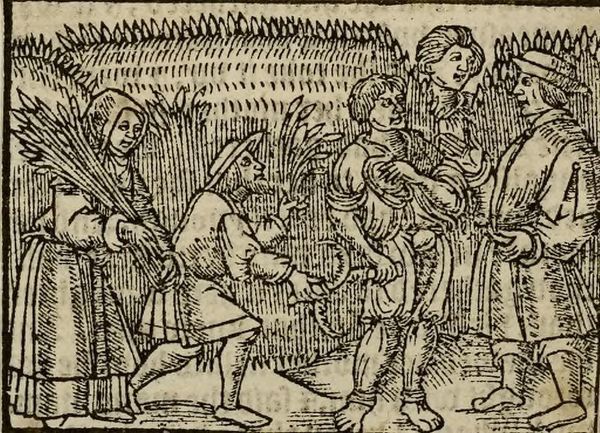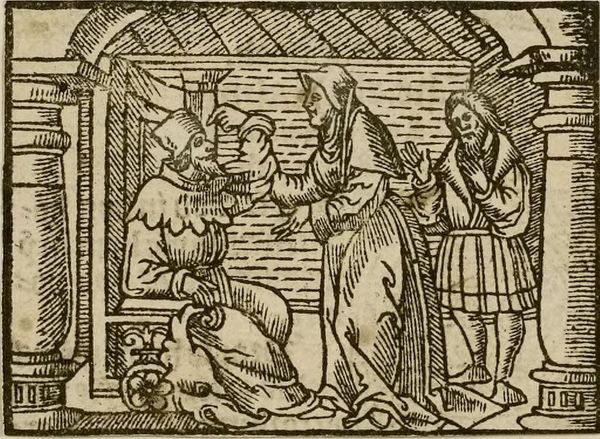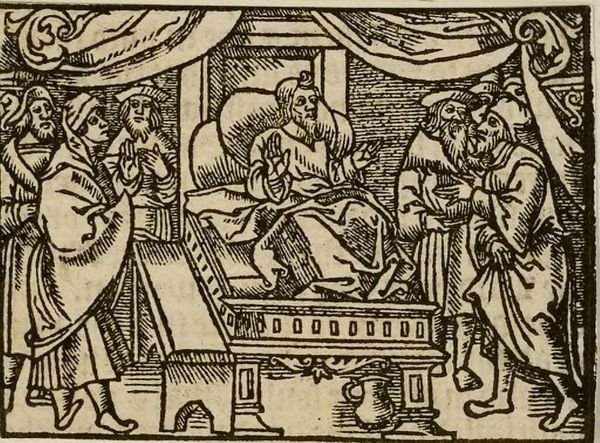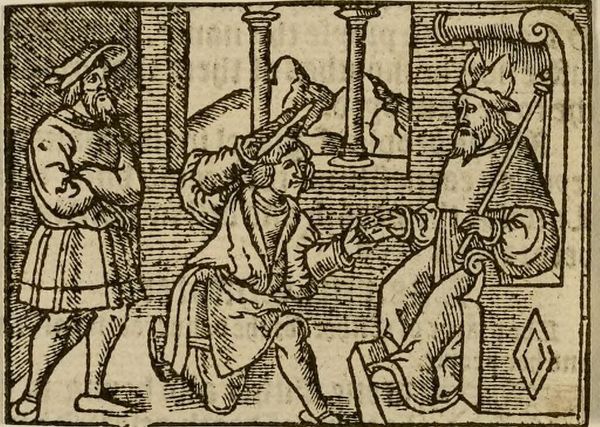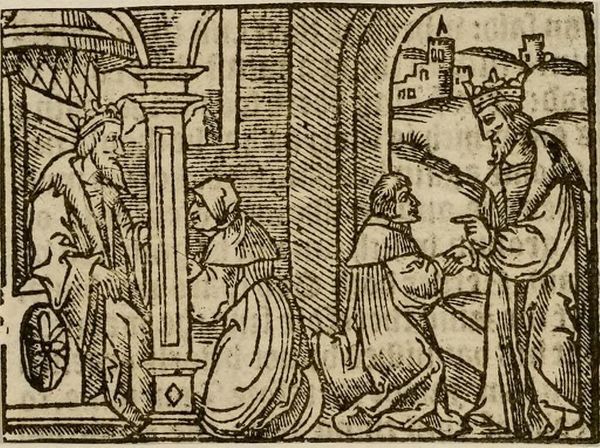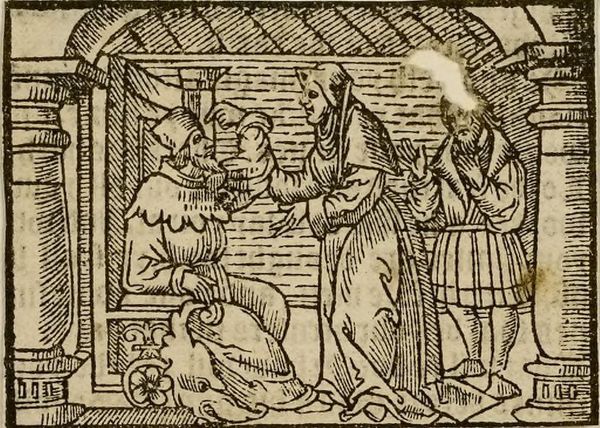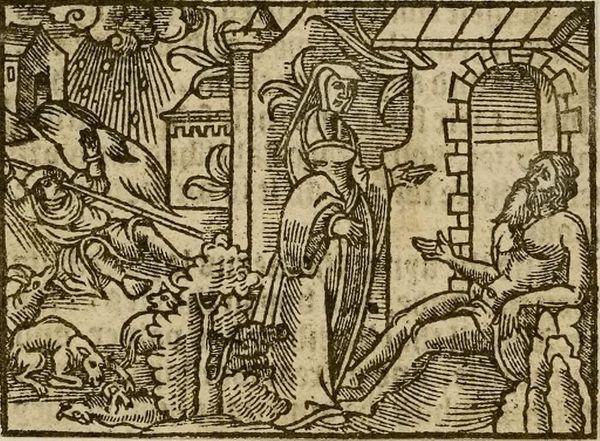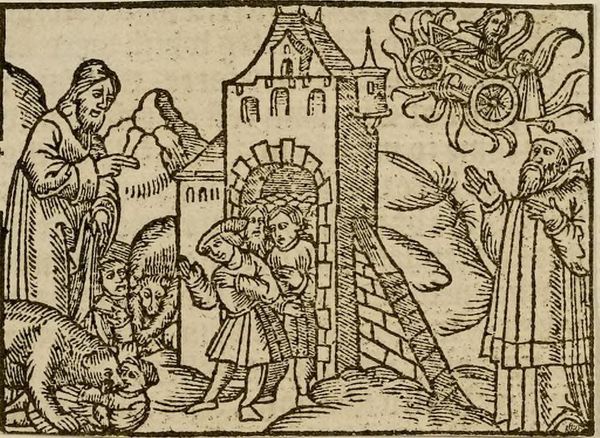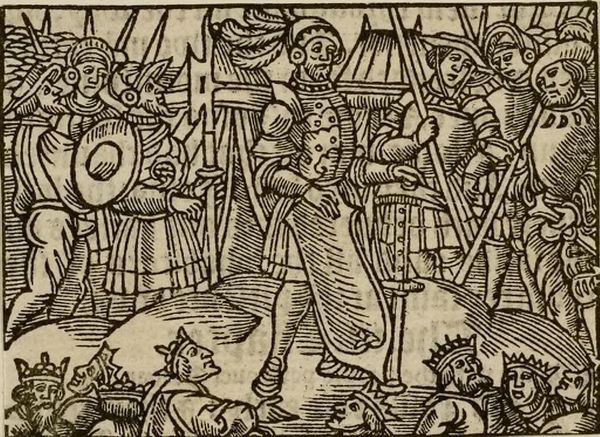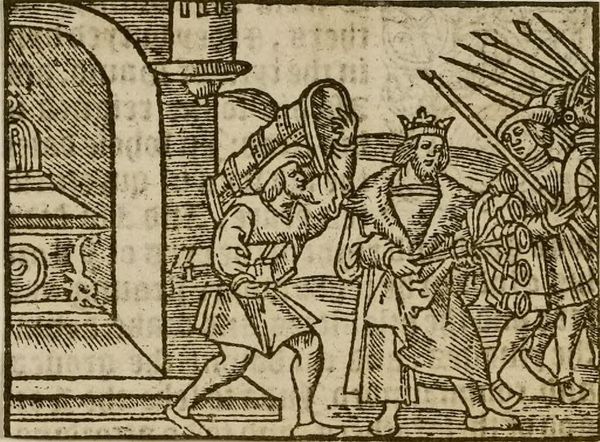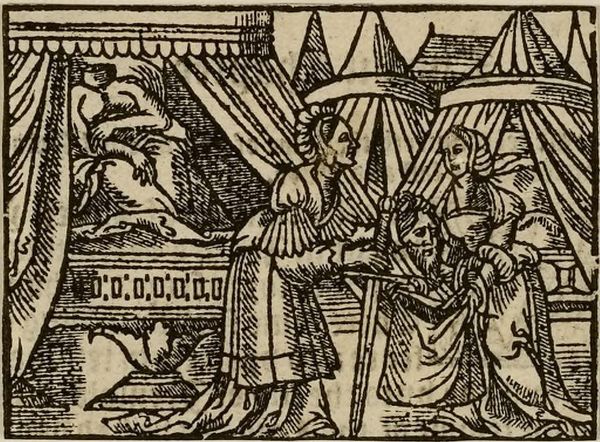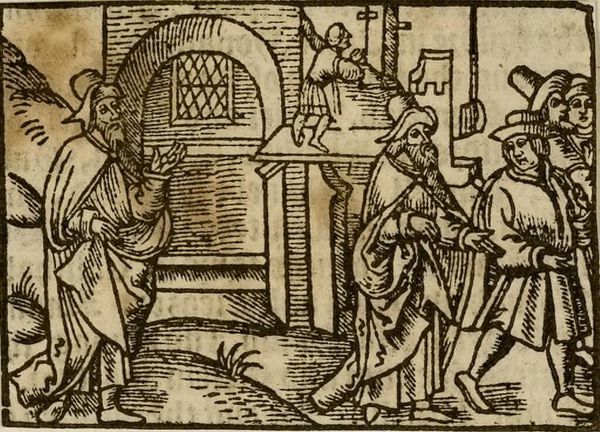
Illustration XXIII: God punishes the rebellion of Korah, Dathan and Abiram. The sinners, their families and all their possessions are swallowed by th earth (Numbers 16: 1-37). c. 16th century
0:00
0:00
Copyright: CC0 1.0
Curator: This woodcut, housed at the Harvard Art Museums, is titled "Illustration XXIII: God punishes the rebellion of Korah, Dathan and Abiram. The sinners, their families and all their possessions are swallowed by the earth." The Book of Numbers provides its narrative. Editor: It's intensely dramatic! Look at the implied motion—tents collapsing, figures plummeting… the composition really conveys chaos and divine wrath. Curator: Precisely. This depiction serves as a potent visual representation of authority and its consequences. Think about the social and political implications of such imagery in its time. The figures aren’t simply being punished. Editor: It's about upholding hierarchies, right? This image clearly communicates the dangers of dissent within a highly structured society, and what's most striking is how it affects every part of their life and even their kin. Curator: Exactly. The narrative underscores the importance of maintaining social order, framing rebellion as not just a personal failing, but a societal threat. It's a powerful message, visualized through the destruction of family units. Editor: I never considered how gender and family dynamics play into it! Curator: Looking at the illustration, we realize the image reflects its socio-cultural context through both its subject matter and stylistic choices. Editor: Absolutely. It's a potent reminder of how art actively shapes our understanding of history and power.
Comments
No comments
Be the first to comment and join the conversation on the ultimate creative platform.
